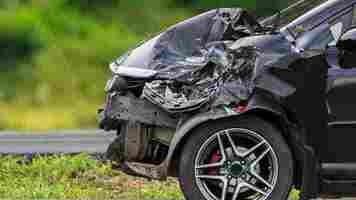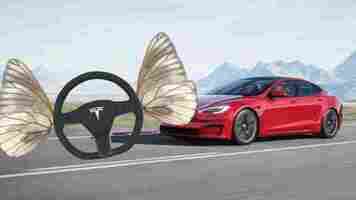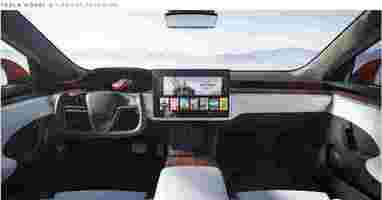COVID-19 increased reckless driving in the US — road traffic deaths up 7% last year
Last year, 38,680 people died on the US roads, according to preliminary estimates of the National Highway Traffic Safety Administration (NHTSA). Sadly, that’s the highest projected number since 2007.

Although Americans drove less during the pandemic (13% less vehicle miles traveled), NHTSA found that crash fatalities in 2020 – including motor vehicle occupants, motorcyclists, pedestrians, and pedalcyclists – increased by 7.2%, as compared to the 36,096 fatalities reported in 2019.


The agency’s analysis identified three main behaviors that resulted in this increase: impaired driving, speeding, and failure to wear a seatbelt. NHTSA’s researchers also concluded that throughout 2020 motorists exhibited a higher risk-taking driving behavior.
Regarding drivers (excluding motorcyclists), the use of alcohol or one type of drug was significantly higher than in the last quarter of 2019, reaching a disturbing 64.4% and 60,7% of the tested motorists in the second and third quarter of 2020, respectively.
Similarly, 63.4% of motorcyclists tested positive for at least one category of drugs in Q3 2020, 17.5% more than in the first quarter.
Speeding-related crashes rose by an alarming 11%. Specifically, the data indicated higher speeds on urban roadways (interstates, local, and major collector roads) in Q3 2020, compared to the same period in 2019. The same goes for speed dispersion in rural local and collector roads, where crash fatalities increased by 11%.
Deaths arising from occupant ejection and unrestrained occupants of passenger vehicles grew by 20% and 15%, respectively. That makes a shocking 35% increase in fatal crashes as a result of not wearing a seatbelt.
Notably, NHTSA observed a 40% year-on-year growth in the daytime ejection rate, which raises concerns about the daytime seatbelt use rate, that was 90.1% in 2019.
Altogether, the traffic fatalities rose in most major categories, apart from pedestrians:
Pedestrians (6,205, flat from 2019)
Passenger vehicle occupants (23,395, up 5%)
Pedalcyclists (people on bikes) (846, up 5%)
Motorcyclists (5,015, up 9%)
On the other hand, f atalities in crashes involving a large truck (commercial or non-commercial use) are projected to slightly decline by 2%, while fatalities among older persons (65+ years of age) are projected to drop by 9%.
Overall, NHTSA’s data is as much sad as it is terrifying. One would expect that the pandemic would reduce fatal crashes, given how much time people spent indoors.
On the contrary, it seems that its psychological impact also affected driving behavior, cultivating a culture of risk taking. Whether this has to do with a false sense of safety due to less traffic or with a deeper change in life perception – a distorted carpe diem -, one thing is certain: road safety rules should still be followed even during health emergencies.
Do EVs excite your electrons? Do ebikes get your wheels spinning? Do self-driving cars get you all charged up?
Then you need the weekly SHIFT newsletter in your life. Click here to sign up
Former F1 designer plans to make world’s lightest EV
The Gordon Murray Group (GMG), founded by the former Formula One designer, announced yesterday a detailed £300 million ($424 million), five-year expansion plan.

Most notably, part of this investment will fund the creation of a new business unit, Gordon Murray Electronic (GME), that will develop advanced electrified powertrains for global carmakers and tech companies.
“The automotive future will be increasingly electrified and it’s essential that we design the world’s lightest, most efficient, and advanced EVs,” Murray said. And that’s exactly GME’s goal.
Lightweight architecture has been Murray’s philosophy throughout his career and, as he told Autocar , he sees many lightweight opportunities in the electric vehicles he’s envisioning. Specifically, he commented that the B-segment design they’re creating can reduce about a third of the current total EV weight.
Why is that important? Well, less weight simply means you need less energy to power your car, which in turn will increase its range.
Murray also said that the firm’s first electric vehicle will take the form of “ a little SUV with a compact delivery van derivative,” aimed to be a practical small car.
In the meantime, GMG is still set on launching the bold T.50 supercar — featuring a gas-guzzling V-12 petrol engine — which will enter production in 2022. Despite the turn to electricity, the company has explicitly remarked it won’t abandon internal combustion power as long as regulations allow it.
Do EVs excite your electrons? Do ebikes get your wheels spinning? Do self-driving cars get you all charged up?
Then you need the weekly SHIFT newsletter in your life. Click here to sign up .
Why Tesla’s impractical butterfly steering wheel probably won’t make it into production
As part of its quarterly earnings call yesterday, EV maker Tesla showed off renderings of an upcoming 2021 Model S refresh. The piece that’s got everyone talking is its butterfly, or as others call it, the Knight Rider- style steering wheel.

But I have some bad news. That steering wheel probably won’t make it in to the production model. Sorry.


Yeah, it’s super cool — and you’d be able to drive along pretending you’re in Knight Rider or something — but steering wheels have to be complete, round, and not have any bits missing.
According to legal resource HGrg , cars “cannot have a ‘butterfly’ shaped steering wheel or a fighter jet like joystick. Instead, a vehicle must have a circular wheel at least 13 inches along its outside diameter.”
It is possible to get exemptions from the rule, but these are usually only granted to specialist one-off vehicles, not mass produced consumer cars.
That’s a good thing, because honestly steering wheels like this aren’t useful in the real world. They prevent the driver from shuffling the wheel through their hands as they turn to full lock. A butterfly steering wheel means that you’ll have to cross your arms as you make big turns, which is just clumsy and unsafe.
The renderings also appear to show that Tesla has done away with its gear selector stalk that used to sit on the steering column. Instead, the company says it will move all of those buttons, and the indicator and wiper stalks, to the steering wheel, to put all the controls at the driver’s fingertips.
Tesla’s far from the first company to over-promise on a cool-looking steering wheel. As this article from Tuning Blog shows, car companies love to put radically styled steerers on concept cars to grab attention, and aftermarket modders love them for their unique looks.
It’s unlikely the new Model S will ship with the butterfly steering wheel, but there’s nothing stopping you from putting on your own.
SHIFT is brought to you by Polestar. It’s time to accelerate the shift to sustainable mobility. That is why Polestar combines electric driving with cutting-edge design and thrilling performance. Find out how .